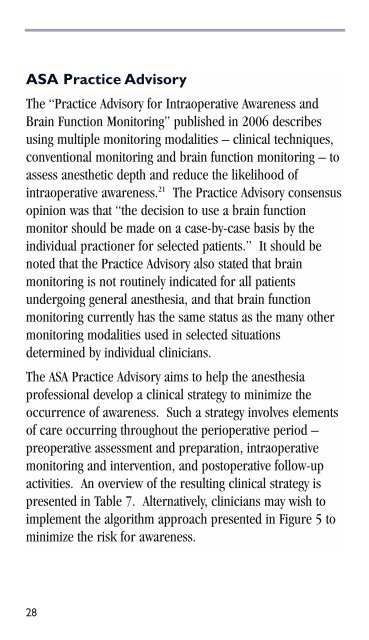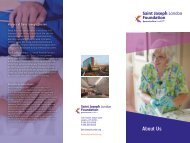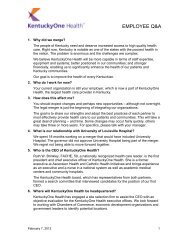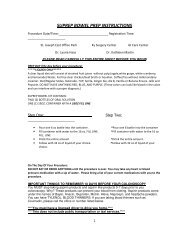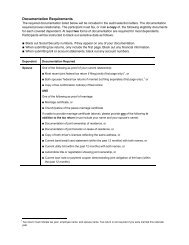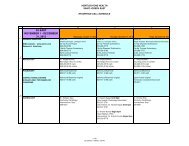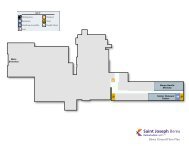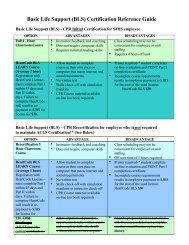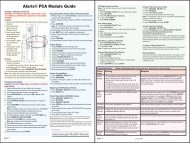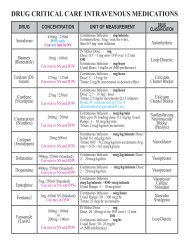BIS guide for clinicians
BIS guide for clinicians
BIS guide for clinicians
Create successful ePaper yourself
Turn your PDF publications into a flip-book with our unique Google optimized e-Paper software.
ASA Practice Advisory<br />
The “Practice Advisory <strong>for</strong> Intraoperative Awareness and<br />
Brain Function Monitoring” published in 2006 describes<br />
using multiple monitoring modalities – clinical techniques,<br />
conventional monitoring and brain function monitoring – to<br />
assess anesthetic depth and reduce the likelihood of<br />
intraoperative awareness. 21 The Practice Advisory consensus<br />
opinion was that “the decision to use a brain function<br />
monitor should be made on a case-by-case basis by the<br />
individual practioner <strong>for</strong> selected patients.” It should be<br />
noted that the Practice Advisory also stated that brain<br />
monitoring is not routinely indicated <strong>for</strong> all patients<br />
undergoing general anesthesia, and that brain function<br />
monitoring currently has the same status as the many other<br />
monitoring modalities used in selected situations<br />
determined by individual <strong>clinicians</strong>.<br />
The ASA Practice Advisory aims to help the anesthesia<br />
professional develop a clinical strategy to minimize the<br />
occurrence of awareness. Such a strategy involves elements<br />
of care occurring throughout the perioperative period –<br />
preoperative assessment and preparation, intraoperative<br />
monitoring and intervention, and postoperative follow-up<br />
activities. An overview of the resulting clinical strategy is<br />
presented in Table 7. Alternatively, <strong>clinicians</strong> may wish to<br />
implement the algorithm approach presented in Figure 5 to<br />
minimize the risk <strong>for</strong> awareness.<br />
28


